Aleksey Ivanov / Profile
- Information
|
7+ years
experience
|
32
products
|
144
demo versions
|
|
0
jobs
|
0
signals
|
0
subscribers
|
👑 Theoretical physicist, programmer, trader with 15 years of experience.
----------------------------------------------------------------------------------------
💰 Presented products:
1) 🏆 Indicators with optimal filtering of market noises (for choosing points of opening and closing positions).
2) 🏆 Statistical indicators (to determine the global trend).
3) 🏆 Market research indicators (to clarify the microstructure of prices, build channels, identify differences between trend reversals and pullbacks).
----------------------------------------------------------------------------------------
☛ More information in the blog https://www.mql5.com/en/blogs/post/741637
----------------------------------------------------------------------------------------
💰 Presented products:
1) 🏆 Indicators with optimal filtering of market noises (for choosing points of opening and closing positions).
2) 🏆 Statistical indicators (to determine the global trend).
3) 🏆 Market research indicators (to clarify the microstructure of prices, build channels, identify differences between trend reversals and pullbacks).
----------------------------------------------------------------------------------------
☛ More information in the blog https://www.mql5.com/en/blogs/post/741637
Aleksey Ivanov
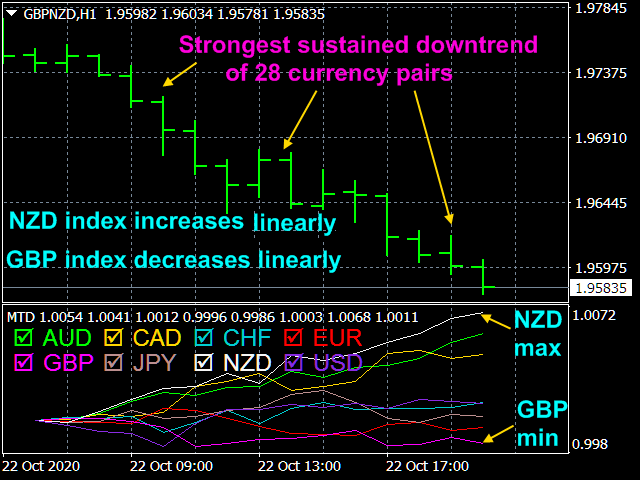
The Multicurrency Trend Detector https://www.mql5.com/en/market/product/56194
Multicurrency Trend Detector indicator allows you to immediately and on one chart on a selected time interval (extending from a zero bar to a bar set in the settings by the value horizon) determine the presence, direction and strength of trends in all major currencies, as well as assess the reliability of these trends.
Author Aleksey Ivanov https://www.mql5.com/en/users/60000382
Multicurrency Trend Detector indicator allows you to immediately and on one chart on a selected time interval (extending from a zero bar to a bar set in the settings by the value horizon) determine the presence, direction and strength of trends in all major currencies, as well as assess the reliability of these trends.
Author Aleksey Ivanov https://www.mql5.com/en/users/60000382

Aleksey Ivanov
Friends! The foreign exchange market in our time is an absolute chaos. If you play on the foreign exchange market, then you should treat it exactly like a game, i.e. it is the same as playing in a casino. Don't expect this game to be your main source of income. These are false hopes. Therefore, play for extra money. In no case do not play with borrowed money from someone (banks, friends, etc.). This will lead to disaster.
There is a little more order in the stock market than in the foreign exchange market. Here you can rely on fundamental data on the economic condition (financial statements, etc.) of the companies that issue the respective shares. But here, in our time, when the global crisis is approaching, the data provided by even reputable experts can be unreliable. However, the indicators I provide are better applied to the stock market, which is more orderly.
Modern profitable indicators https://www.mql5.com/en/blogs/post/741637
Author Aleksey Ivanov https://www.mql5.com/en/users/60000382
There is a little more order in the stock market than in the foreign exchange market. Here you can rely on fundamental data on the economic condition (financial statements, etc.) of the companies that issue the respective shares. But here, in our time, when the global crisis is approaching, the data provided by even reputable experts can be unreliable. However, the indicators I provide are better applied to the stock market, which is more orderly.
Modern profitable indicators https://www.mql5.com/en/blogs/post/741637
Author Aleksey Ivanov https://www.mql5.com/en/users/60000382
Aleksey Ivanov
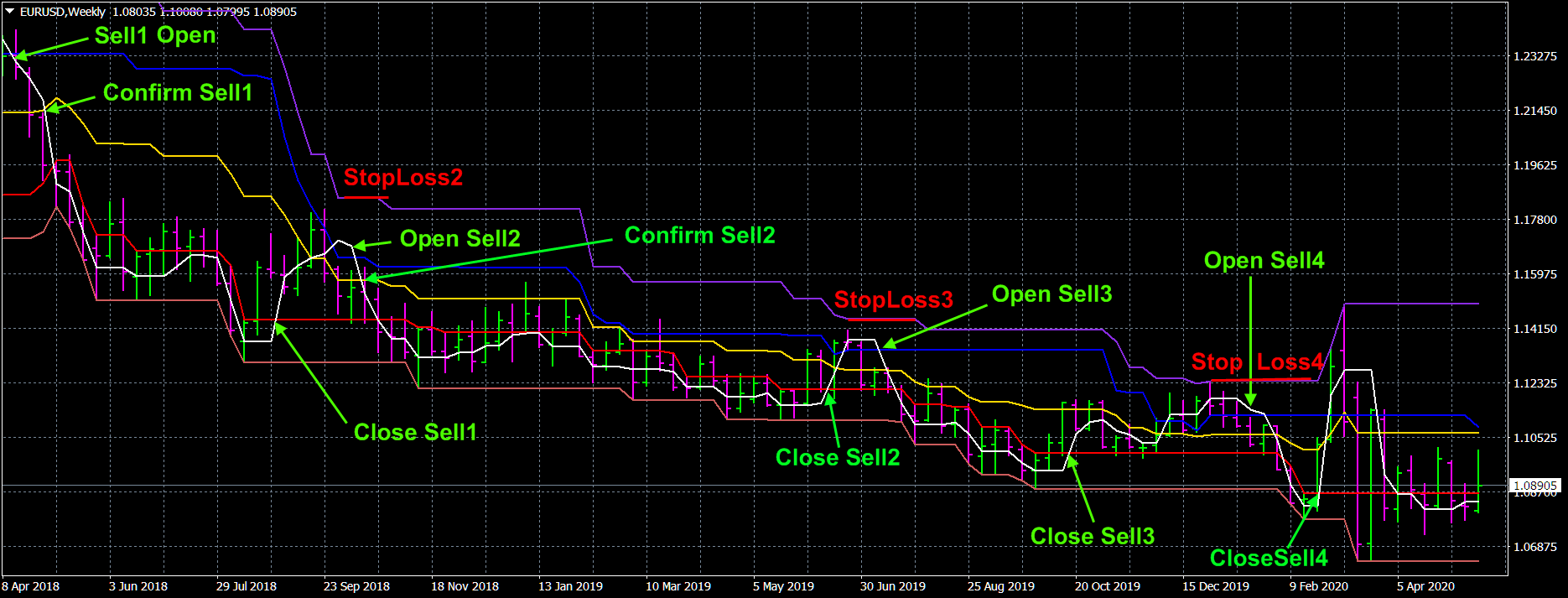
Profit Trade https://www.mql5.com/en/market/product/49806
Profit Trade is a deep development of the well-known Donchian channel indicator.
✔️ The indicator demonstrates the current state of the market in a clear and covering all characteristic price scales.
✔️The filtration used in Profit Trade is extremely robust; and this indicator does not redraw.
✔️The indicator settings are extremely simple.
✔️The algorithms of this indicator are unique and developed by their author
Author Aleksey Ivanov https://www.mql5.com/en/users/60000382
Profit Trade is a deep development of the well-known Donchian channel indicator.
✔️ The indicator demonstrates the current state of the market in a clear and covering all characteristic price scales.
✔️The filtration used in Profit Trade is extremely robust; and this indicator does not redraw.
✔️The indicator settings are extremely simple.
✔️The algorithms of this indicator are unique and developed by their author
Author Aleksey Ivanov https://www.mql5.com/en/users/60000382

Aleksey Ivanov
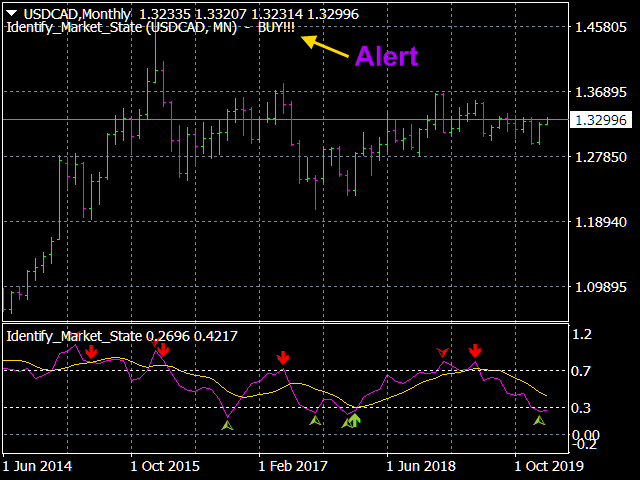
Identify Market State https://www.mql5.com/en/market/product/46028
The Identify Market State indicator allows you to set the beginning of a new trends and pullbacks on an existing trend. This indicator can be used both for trading on scalper strategies and for long-term trading strategies.
✔️ The indicator does not redraw.
✔️The indicator has all types of alerts.
✔️The algorithms of this indicator are unique and developed by their author
Author Aleksey Ivanov https://www.mql5.com/en/users/60000382
The Identify Market State indicator allows you to set the beginning of a new trends and pullbacks on an existing trend. This indicator can be used both for trading on scalper strategies and for long-term trading strategies.
✔️ The indicator does not redraw.
✔️The indicator has all types of alerts.
✔️The algorithms of this indicator are unique and developed by their author
Author Aleksey Ivanov https://www.mql5.com/en/users/60000382

Aleksey Ivanov
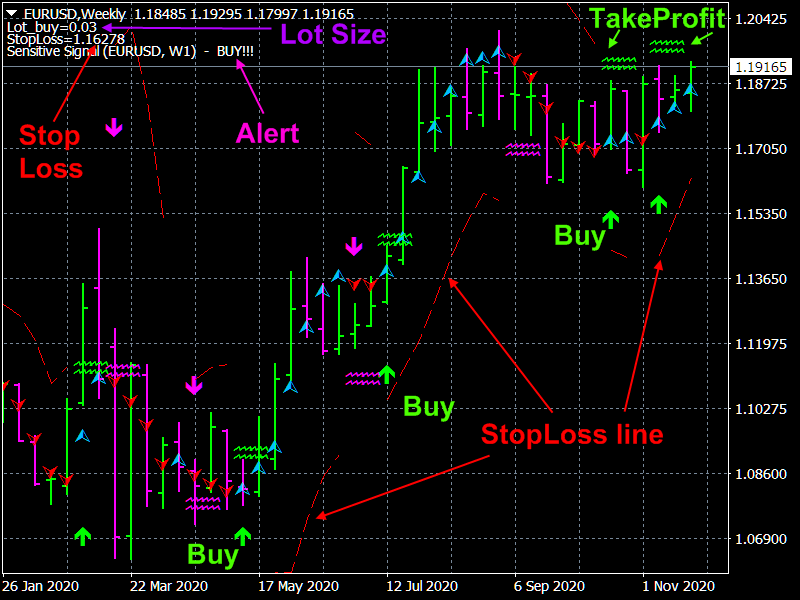
Sensitive Signal https://www.mql5.com/en/market/product/34171
✔️The most sensitive indicator with optimal market noise filtering.
✔️The best indicator for scalpers.
✔️Calculates stop loss and take profit positions.
✔️It has built-in management and all kinds of alerts.
✔️The algorithms of this indicator are unique and developed by their author
Author Aleksey Ivanov https://www.mql5.com/en/users/60000382
✔️The most sensitive indicator with optimal market noise filtering.
✔️The best indicator for scalpers.
✔️Calculates stop loss and take profit positions.
✔️It has built-in management and all kinds of alerts.
✔️The algorithms of this indicator are unique and developed by their author
Author Aleksey Ivanov https://www.mql5.com/en/users/60000382

Aleksey Ivanov
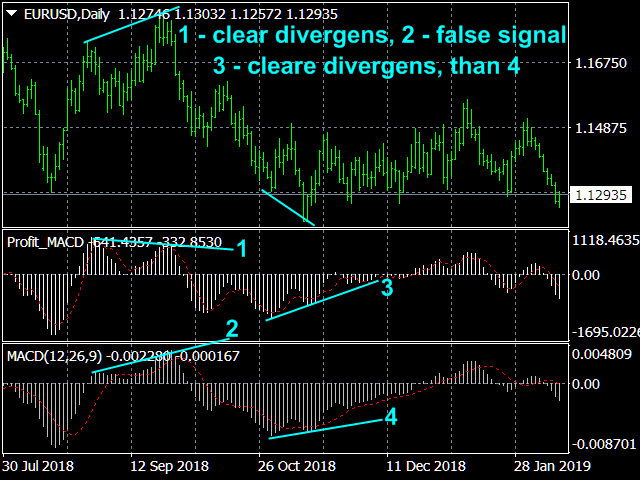
Profit MACD https://www.mql5.com/en/market/product/35659
✔️ One of my most profitable indicators with optimal filtering.
✔️The algorithms of this indicator are unique and developed by their author
✔️The indicator has all kinds of alerts.
✔️ The indicator does not redraw.
Author Aleksey Ivanov https://www.mql5.com/en/users/60000382
✔️ One of my most profitable indicators with optimal filtering.
✔️The algorithms of this indicator are unique and developed by their author
✔️The indicator has all kinds of alerts.
✔️ The indicator does not redraw.
Author Aleksey Ivanov https://www.mql5.com/en/users/60000382

Aleksey Ivanov
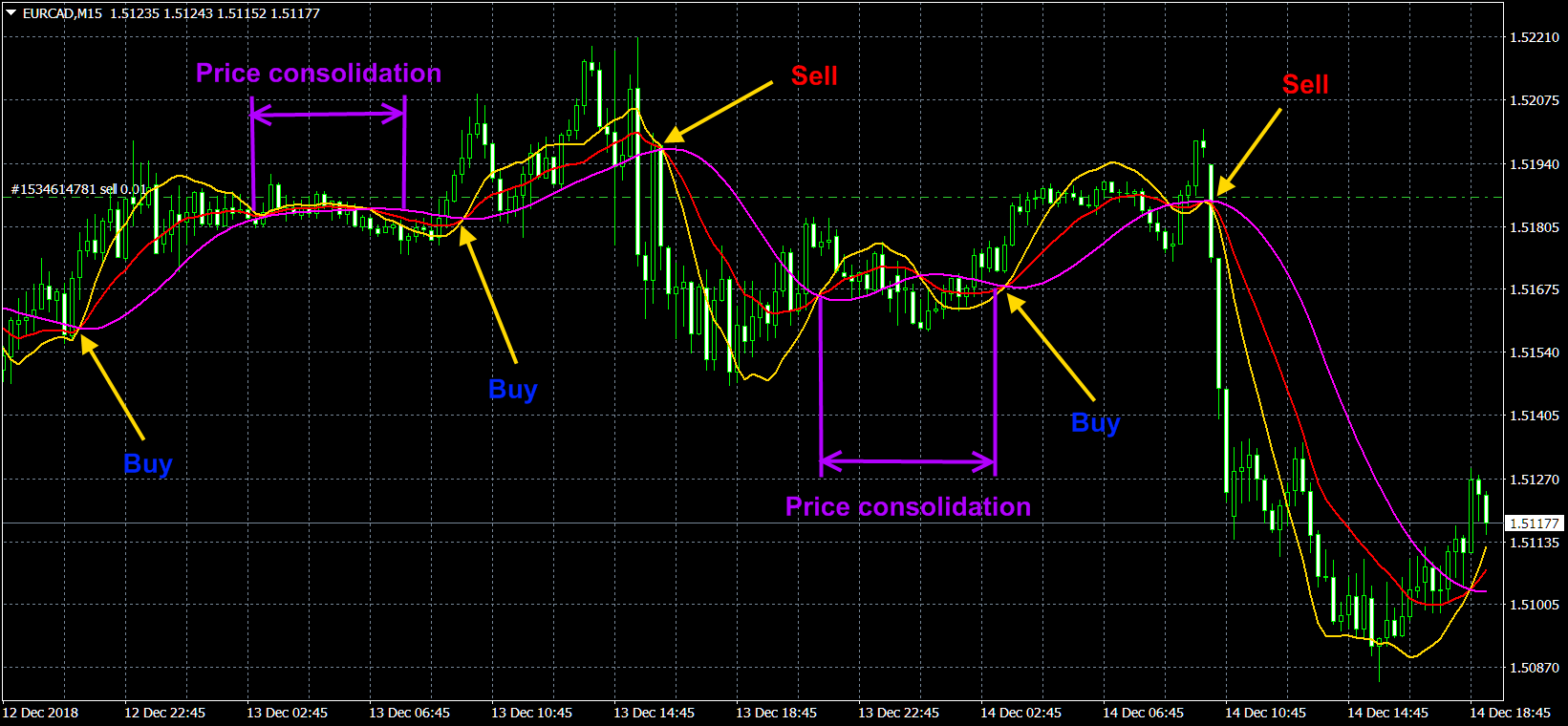
Cunning crocodile https://www.mql5.com/en/market/product/32028
✔️ One of the best indicators with optimal market noise filtering.
✔️The indicator has all kinds of alerts.
✔️ The indicator does not redraw.
✔️The algorithms of this indicator are unique and developed by their author
Author Aleksey Ivanov https://www.mql5.com/en/users/60000382
✔️ One of the best indicators with optimal market noise filtering.
✔️The indicator has all kinds of alerts.
✔️ The indicator does not redraw.
✔️The algorithms of this indicator are unique and developed by their author
Author Aleksey Ivanov https://www.mql5.com/en/users/60000382

Aleksey Ivanov
✔️ Here are indicators from the creator of the scientific rigorous theory of price movement Part 1 https://www.mql5.com/en/articles/10955 ,
Part 2 https://www.mql5.com/en/articles/11158
Part 3 https://www.mql5.com/en/articles/12891
and
the author of the well-known Identify Trend indicator https://www.mql5.com/en/market/product/36336 .
✔️The algorithms of most indicators (Modern profitable indicators https://www.mql5.com/en/blogs/post/741637 ) are unique and developed by their author.
Part 2 https://www.mql5.com/en/articles/11158
Part 3 https://www.mql5.com/en/articles/12891
and
the author of the well-known Identify Trend indicator https://www.mql5.com/en/market/product/36336 .
✔️The algorithms of most indicators (Modern profitable indicators https://www.mql5.com/en/blogs/post/741637 ) are unique and developed by their author.
Aleksey Ivanov
Friends! For those who bought the Scientific trade indicator, it is advisable to download 2 auxiliary tools for it - a script + an indicator.
1. CalculateScientificTradePeriod script
https://www.mql5.com/en/market/product/99909
Firstly, the script estimates how many Mx bars of the chart (on which this script is applied) the future trend will most likely continue and what is its quality.
Secondly, the script is an auxiliary tool for the extremely mathematically advanced and extremely effective ScientificTrade indicator in trading. https://www.mql5.com/en/market/product/98467
2. FindScientificTradePeriod indicator
https://www.mql5.com/en/market/product/99926
The indicator visualizes the result of the CalculateScientificTradePeriod script (which, of course, also needs to be downloaded), which, firstly, estimates how many Mx bars of the active chart the future trend will most likely continue and what is its quality, and, secondly, calculates the optimal the averaging period (which is also equal to Mx) of the ScientificTrade indicator, which gives the maximum profit according to the extremely effective ScientificTrade strategy.
1. CalculateScientificTradePeriod script
https://www.mql5.com/en/market/product/99909
Firstly, the script estimates how many Mx bars of the chart (on which this script is applied) the future trend will most likely continue and what is its quality.
Secondly, the script is an auxiliary tool for the extremely mathematically advanced and extremely effective ScientificTrade indicator in trading. https://www.mql5.com/en/market/product/98467
2. FindScientificTradePeriod indicator
https://www.mql5.com/en/market/product/99926
The indicator visualizes the result of the CalculateScientificTradePeriod script (which, of course, also needs to be downloaded), which, firstly, estimates how many Mx bars of the active chart the future trend will most likely continue and what is its quality, and, secondly, calculates the optimal the averaging period (which is also equal to Mx) of the ScientificTrade indicator, which gives the maximum profit according to the extremely effective ScientificTrade strategy.
Aleksey Ivanov
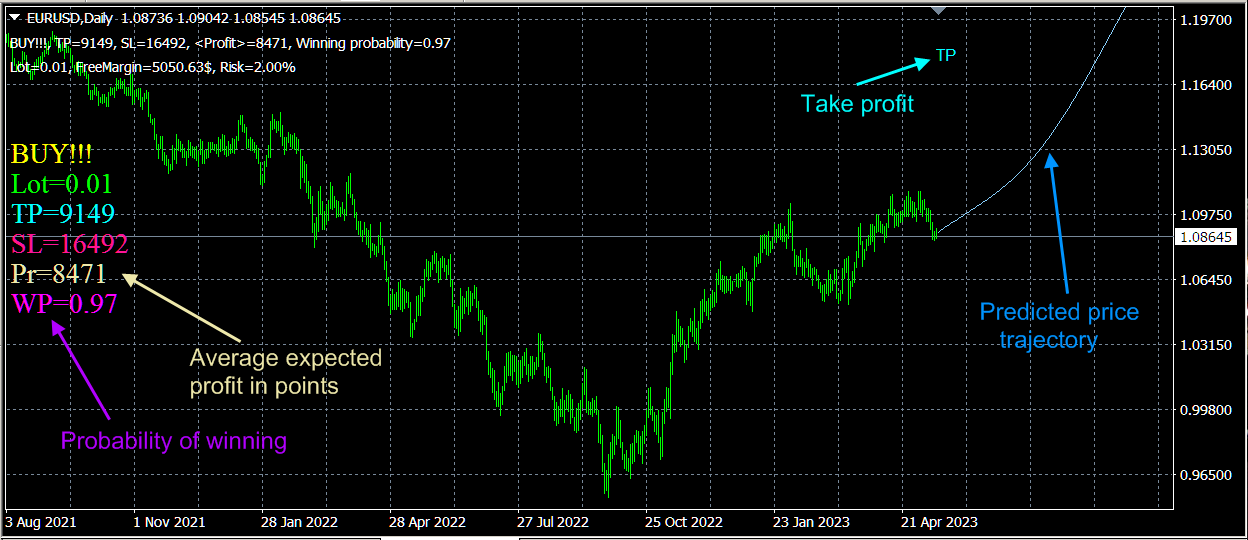
Dear friends! If you want to really make money on the financial and stock markets, use the following indicator.
Scientific trade https://www.mql5.com/en/accounting/buy/market/98467?period=0
An extremely convenient indicator that truly makes the process of making money on the exchange easy. It is based on the scientifically rigorous theory of the market developed by the author, the beginning of which is presented https://www.mql5.com/en/articles/10955 .
The full algorithm of this indicator operation is presented in the article. https://www.mql5.com/en/articles/12891
The indicator calculates the most probable price movement trajectory and displays it on the chart. Based on the predicted price movement trajectory, the indicator calculates the direction of the position and the position of the take profit. Based on the statistically calculated uncertainty of the trajectory of the predicted price movement, the selected risk level and the size of the deposit, the indicator also calculates the lot size and stop loss position. The averaging period of the indicator is selected based on the maximum probability of winning, which is presented for each period on the main chart of the trading terminal.
It is better to use M1-M15 timeframes in the indicator; at the same time, it is recommended to play according to the global trend, determined on H4, D1, i.e. if the indicator gives a SELL signal, then this position is opened when the global trend is down; if the indicator signal is BUY, then the position is opened when the global trend is up.
After choosing a timeframe, you sort through the averaging values like 20, 30, 40, …, 200 and look at the trading terminal at what value the maximum probability of winning is achieved. This is the value you should use. Since the averaging period of the indicator must be selected manually in the process of moving along the price history, the indicator readings in the tester cannot reflect the full effectiveness of its work and may be incorrect.
To automatically determine the optimal averaging period (which gives the maximum probability of winning), the CalculateScientificTradePeriod script has been developed. https://www.mql5.com/en/market/product/99909
The operation of the indicator is based on predicting the market's own trends, so it is not recommended to use it before and immediately after strong news, as well as in case of strong market volatility, especially if the volatility is the result of crisis processes. The indicator's forecast period, which is its averaging period, should not go beyond the future moment of strong news release.
Before opening a position, you should only assess the state of the market and take into account news factors.
Everything else - position direction, lot size and stop orders - will be automatically calculated by the indicator for you. After that, you open a position, and then turn off the computer and do things that are pleasant for you.
Scientific trade https://www.mql5.com/en/accounting/buy/market/98467?period=0
An extremely convenient indicator that truly makes the process of making money on the exchange easy. It is based on the scientifically rigorous theory of the market developed by the author, the beginning of which is presented https://www.mql5.com/en/articles/10955 .
The full algorithm of this indicator operation is presented in the article. https://www.mql5.com/en/articles/12891
The indicator calculates the most probable price movement trajectory and displays it on the chart. Based on the predicted price movement trajectory, the indicator calculates the direction of the position and the position of the take profit. Based on the statistically calculated uncertainty of the trajectory of the predicted price movement, the selected risk level and the size of the deposit, the indicator also calculates the lot size and stop loss position. The averaging period of the indicator is selected based on the maximum probability of winning, which is presented for each period on the main chart of the trading terminal.
It is better to use M1-M15 timeframes in the indicator; at the same time, it is recommended to play according to the global trend, determined on H4, D1, i.e. if the indicator gives a SELL signal, then this position is opened when the global trend is down; if the indicator signal is BUY, then the position is opened when the global trend is up.
After choosing a timeframe, you sort through the averaging values like 20, 30, 40, …, 200 and look at the trading terminal at what value the maximum probability of winning is achieved. This is the value you should use. Since the averaging period of the indicator must be selected manually in the process of moving along the price history, the indicator readings in the tester cannot reflect the full effectiveness of its work and may be incorrect.
To automatically determine the optimal averaging period (which gives the maximum probability of winning), the CalculateScientificTradePeriod script has been developed. https://www.mql5.com/en/market/product/99909
The operation of the indicator is based on predicting the market's own trends, so it is not recommended to use it before and immediately after strong news, as well as in case of strong market volatility, especially if the volatility is the result of crisis processes. The indicator's forecast period, which is its averaging period, should not go beyond the future moment of strong news release.
Before opening a position, you should only assess the state of the market and take into account news factors.
Everything else - position direction, lot size and stop orders - will be automatically calculated by the indicator for you. After that, you open a position, and then turn off the computer and do things that are pleasant for you.

Aleksey Ivanov
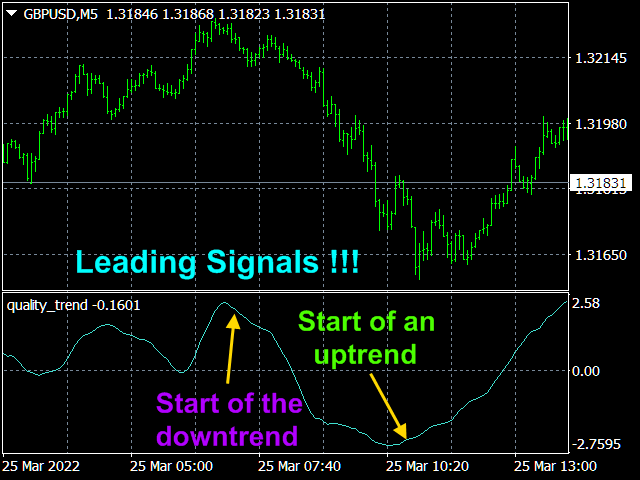
Quality trend https://www.mql5.com/en/accounting/buy/market/79505?period=0
The Quality trend indicator expresses the ratio of the strength of a trend or the speed of its growth (fall) to the degree of its noisiness or a certain norm of amplitudes of chaotic fluctuations of a growing (falling) price. The position of the indicator line above zero shows an increasing trend, below zero - a falling trend, the fluctuation of the indicator line near zero shows a flat.
If the indicator line begins to fluctuate rapidly around zero and approach it, then this indicates the imminent beginning of a trend movement. Quite often, an increase in the noise of even a rapidly growing trend or an increase in volatility indicates upcoming changes in the market, in particular, the end of the corresponding trend movement. Consequently, if the readings of an indicator with a high quality factor value suddenly start to decrease, then this indicates the imminent end of the corresponding trend movement. Therefore, the indicator readings are often leading and show the near end of a trend movement with a transition to a flat or even a change in the direction of the trend movement.
✔️The indicator does not lag behind and does not redraw
✔️The algorithms of this indicator are unique and developed by their author.
The algorithm of this indicator is presented in the article. https://www.mql5.com/en/articles/12891
Author Aleksey Ivanov https://www.mql5.com/en/users/60000382
The Quality trend indicator expresses the ratio of the strength of a trend or the speed of its growth (fall) to the degree of its noisiness or a certain norm of amplitudes of chaotic fluctuations of a growing (falling) price. The position of the indicator line above zero shows an increasing trend, below zero - a falling trend, the fluctuation of the indicator line near zero shows a flat.
If the indicator line begins to fluctuate rapidly around zero and approach it, then this indicates the imminent beginning of a trend movement. Quite often, an increase in the noise of even a rapidly growing trend or an increase in volatility indicates upcoming changes in the market, in particular, the end of the corresponding trend movement. Consequently, if the readings of an indicator with a high quality factor value suddenly start to decrease, then this indicates the imminent end of the corresponding trend movement. Therefore, the indicator readings are often leading and show the near end of a trend movement with a transition to a flat or even a change in the direction of the trend movement.
✔️The indicator does not lag behind and does not redraw
✔️The algorithms of this indicator are unique and developed by their author.
The algorithm of this indicator is presented in the article. https://www.mql5.com/en/articles/12891
Author Aleksey Ivanov https://www.mql5.com/en/users/60000382

Aleksey Ivanov
https://www.mql5.com/en/accounting/buy/market/54630?period=0
✔️indicator Absolute price is intended for professionals assessing fundamental market trends. This indicator calculates the index of any instrument and analyzes it.
✔️index of the state currency shows the real purchasing power of this currency, and the dynamics of this index shows the dynamics of the economic state of the corresponding state. An analysis of the indices of both currencies included in a currency pair makes it much more reliable to identify the trend of this currency pair and assess the possibility of its continuation.
✔️indicator allows you to determine the index or absolute price of any currency from any currency pair, as well as the absolute price of any other instrument (metal, CFD, etc.) by correlating the quote of this instrument with the index of the dollar ( USDX) or the index of the euro ( EURX).
For instance : the Index (X) index of currency X in pairs X/USD and X/EUR is found from the ratios Index (X) = (X/USD)*USDX and Index (X) = (X/EUR)*EURX, and for pairs USD/X and EUR/X - from the ratios Index (X) = USDX/(USD/X) and Index (X) = EURX/(EUR/X).
absolute price of a metal or CFD, the quote of which M is determined in relation to the dollar, is calculated as Index (M) = M*USDX.
indicator, of course, also calculates the USDX dollar index according to the standards adopted by the Intercontinental Exchange( ICE), where this index is calculated as a geometric weighted average of these currencies using the formula:
USDX= 50.14348112 * USDEUR^(0.576) * USDJPY^(0.136) * USDGBP^(0.119) * USDCAD^(0.091) * USDSEK^(0.042) * USDCHF^(0.036),
showing the value of the US dollar against a basket of six major currencies: the euro (EUR), the yen (JPY), the pound sterling (GBP), the Canadian dollar (CAD), the Swedish krona (SEK), and the Swiss franc (CHF).A similar ratio for the euro index (adopted by the European Central Bank) is:
EURX=34.38805726*EURUSD^(0,3155)*EURGBP^(0.3056)*EURJPY^(0.1891)*EURCHF^(0.1113)*EURSEK^(0.0785).
✔️indicator allows you to quickly analyze their behavior (tendencies and trend changes) based on a number of indicators, namely: 1) Moving Average; 2) Relative Strength Index; 3) Momentum; 4) Commodity Channel Index; 5) Bollinger Bands; 6) Envelopes.
For the indicator to work, you need to load the history (Tools / History Center) of quotes EURUSD , USDJPY, GBPUSD, USDCAD, USDSEK and USDCHF .
Since the indices of currencies reflect the true economic conditions of the respective countries, the growth of the index indicates the growth of the economy, and the decline - of the fall, which expresses the true trends.
Therefore, if the Index (X) of currency X in currency pair X/Y rises, and Index (Y) of currency Y falls, then this is the most reliable signal to buy X/Y. The trends of currency pairs arising from the joint growth of their constituent currencies or their joint fall are extremely unstable and subject to large and unpredictable random fluctuations. You need to identify such trends and try not to open positions on them.
settings.
Calculate Index (absolute price). Calculate index or absolute price. Values: Index USD, Index EUR, Chart instrument index (default).
Calculate the numerator index? Calculate the currency index in the numerator of a currency pair? Option for pairs not containing EUR or USD. Values: true (default), false (if false, the index of the currency in the denominator is calculated).
Select the index analysis mode. Values: No (default – shows the index itself), Moving Average; Relative Strength Index; Momentum; Commodity Channel Index; Bollinger Bands; Envelopes.
The averaging method. Values: Simple (default), Exponential, Smoothed, Linear weighted.
The averaging period . Values: any integer (15 default).
Deviations (STD for Bands, % for Envelopes) – deviation. Values: any real number (2.0 default).
✔️indicator Absolute price is intended for professionals assessing fundamental market trends. This indicator calculates the index of any instrument and analyzes it.
✔️index of the state currency shows the real purchasing power of this currency, and the dynamics of this index shows the dynamics of the economic state of the corresponding state. An analysis of the indices of both currencies included in a currency pair makes it much more reliable to identify the trend of this currency pair and assess the possibility of its continuation.
✔️indicator allows you to determine the index or absolute price of any currency from any currency pair, as well as the absolute price of any other instrument (metal, CFD, etc.) by correlating the quote of this instrument with the index of the dollar ( USDX) or the index of the euro ( EURX).
For instance : the Index (X) index of currency X in pairs X/USD and X/EUR is found from the ratios Index (X) = (X/USD)*USDX and Index (X) = (X/EUR)*EURX, and for pairs USD/X and EUR/X - from the ratios Index (X) = USDX/(USD/X) and Index (X) = EURX/(EUR/X).
absolute price of a metal or CFD, the quote of which M is determined in relation to the dollar, is calculated as Index (M) = M*USDX.
indicator, of course, also calculates the USDX dollar index according to the standards adopted by the Intercontinental Exchange( ICE), where this index is calculated as a geometric weighted average of these currencies using the formula:
USDX= 50.14348112 * USDEUR^(0.576) * USDJPY^(0.136) * USDGBP^(0.119) * USDCAD^(0.091) * USDSEK^(0.042) * USDCHF^(0.036),
showing the value of the US dollar against a basket of six major currencies: the euro (EUR), the yen (JPY), the pound sterling (GBP), the Canadian dollar (CAD), the Swedish krona (SEK), and the Swiss franc (CHF).A similar ratio for the euro index (adopted by the European Central Bank) is:
EURX=34.38805726*EURUSD^(0,3155)*EURGBP^(0.3056)*EURJPY^(0.1891)*EURCHF^(0.1113)*EURSEK^(0.0785).
✔️indicator allows you to quickly analyze their behavior (tendencies and trend changes) based on a number of indicators, namely: 1) Moving Average; 2) Relative Strength Index; 3) Momentum; 4) Commodity Channel Index; 5) Bollinger Bands; 6) Envelopes.
For the indicator to work, you need to load the history (Tools / History Center) of quotes EURUSD , USDJPY, GBPUSD, USDCAD, USDSEK and USDCHF .
Since the indices of currencies reflect the true economic conditions of the respective countries, the growth of the index indicates the growth of the economy, and the decline - of the fall, which expresses the true trends.
Therefore, if the Index (X) of currency X in currency pair X/Y rises, and Index (Y) of currency Y falls, then this is the most reliable signal to buy X/Y. The trends of currency pairs arising from the joint growth of their constituent currencies or their joint fall are extremely unstable and subject to large and unpredictable random fluctuations. You need to identify such trends and try not to open positions on them.
settings.
Calculate Index (absolute price). Calculate index or absolute price. Values: Index USD, Index EUR, Chart instrument index (default).
Calculate the numerator index? Calculate the currency index in the numerator of a currency pair? Option for pairs not containing EUR or USD. Values: true (default), false (if false, the index of the currency in the denominator is calculated).
Select the index analysis mode. Values: No (default – shows the index itself), Moving Average; Relative Strength Index; Momentum; Commodity Channel Index; Bollinger Bands; Envelopes.
The averaging method. Values: Simple (default), Exponential, Smoothed, Linear weighted.
The averaging period . Values: any integer (15 default).
Deviations (STD for Bands, % for Envelopes) – deviation. Values: any real number (2.0 default).

Aleksey Ivanov
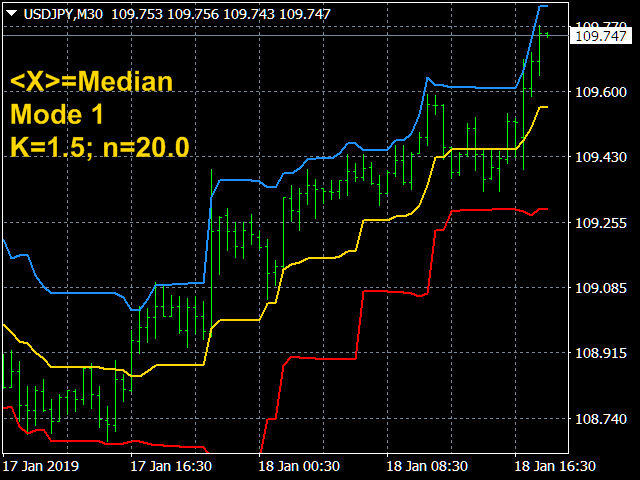
Channel Builder FREE https://www.mql5.com/en/market/product/34818
The Channel Builder (CB) or Ivanov Bands indicator is a broad generalization of the Bollinger Bands indicator. First, in CB, the mean line is calculated using various averaging algorithms. Secondly, the mean deviations calculated by Kolmogorov averaging are plotted on both sides of the middle line .
✔️The algorithms of this indicator are unique and developed by their author
Author Aleksey Ivanov https://www.mql5.com/en/users/60000382
The Channel Builder (CB) or Ivanov Bands indicator is a broad generalization of the Bollinger Bands indicator. First, in CB, the mean line is calculated using various averaging algorithms. Secondly, the mean deviations calculated by Kolmogorov averaging are plotted on both sides of the middle line .
✔️The algorithms of this indicator are unique and developed by their author
Author Aleksey Ivanov https://www.mql5.com/en/users/60000382

Aleksey Ivanov
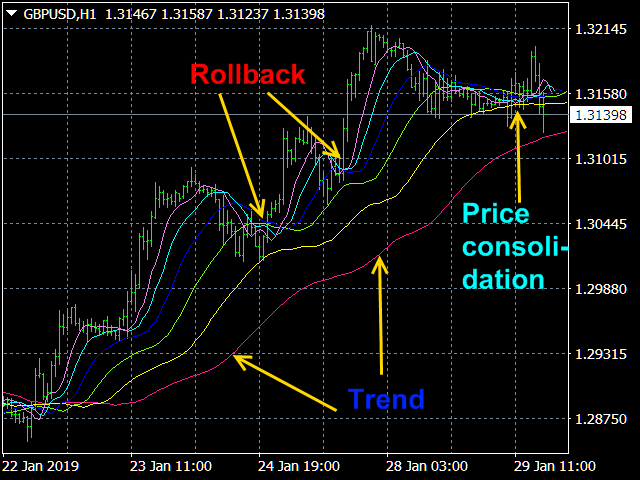
Alligator Analysis FREE https://www.mql5.com/en/market/product/35227
The “Alligator Analysis” (AA) indicator allows you to build various (by averaging types and by scales) “Alligators” and their combinations, i.e. allows you to analyze the state of the market based on the correlation of this state with a whole range of different "Alligators". The classic "Alligator" by Bill Williams is based on moving averages and Fibonacci numbers, which makes it one of the best indicators now. The classic "Alligator" is based on Fibonacci numbers and is a combination of three smoothed moving averages (SМMA) with periods 5, 8 and 13, which are part of the Fibonacci sequence. In this case, the moving averages are shifted forwards by 3, 5, and 8 bars, respectively, which are numbers from the same sequence (preceding the corresponding period values).
Alligators from the AA indicator is based, on the same principle as the classic “Alligator”, but on different parts of a number of Fibonacci numbers, as well as on different moving average averaging algorithms.
The indicator AA uses 6 types of averaging, where the classical averaging SMA, EMA, SMMA, LMA are supplemented by averaging the moving average by the median and averaging weighted by volume.
Line shifts can be removed. The colors of the AA indicator lines are set according to the type of color spectrum: from violet for a small smoothing period to red - for the largest period.
Author Aleksey Ivanov https://www.mql5.com/en/users/60000382
The “Alligator Analysis” (AA) indicator allows you to build various (by averaging types and by scales) “Alligators” and their combinations, i.e. allows you to analyze the state of the market based on the correlation of this state with a whole range of different "Alligators". The classic "Alligator" by Bill Williams is based on moving averages and Fibonacci numbers, which makes it one of the best indicators now. The classic "Alligator" is based on Fibonacci numbers and is a combination of three smoothed moving averages (SМMA) with periods 5, 8 and 13, which are part of the Fibonacci sequence. In this case, the moving averages are shifted forwards by 3, 5, and 8 bars, respectively, which are numbers from the same sequence (preceding the corresponding period values).
Alligators from the AA indicator is based, on the same principle as the classic “Alligator”, but on different parts of a number of Fibonacci numbers, as well as on different moving average averaging algorithms.
The indicator AA uses 6 types of averaging, where the classical averaging SMA, EMA, SMMA, LMA are supplemented by averaging the moving average by the median and averaging weighted by volume.
Line shifts can be removed. The colors of the AA indicator lines are set according to the type of color spectrum: from violet for a small smoothing period to red - for the largest period.
Author Aleksey Ivanov https://www.mql5.com/en/users/60000382

Aleksey Ivanov
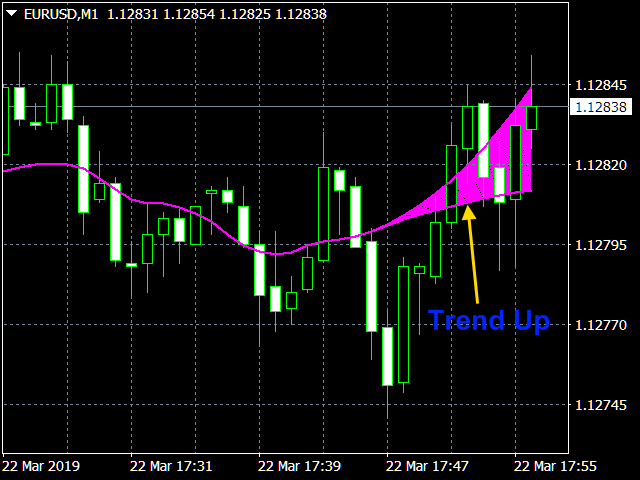
Estimation moving average without lag https://www.mql5.com/en/accounting/buy/market/36945?period=0
A simple moving average (SMA) with an averaging period (2n + 1) of bars is always obtained lagging by n bars. If SMA or other types of moving averages are the basis for making trading decisions, then their strong delay does not allow to open positions in time and close positions, which leads to losses.
The Estimation moving average without lag (EMAWL) indicator calculates the non-lagging moving average, which is calculated at the points (Inf, n + 1) in the usual way, and at the points of the [n, 0] segment, where 0 is the last bar number, is algorithmically and there is a curvilinear sector (cover out the confidence interval) in which the line of the non-lagging moving average fits with the confidence level specified in the indicator settings. It is clear that the more the confidence probability value is taken (which by default is equal to 0.67), the wider the curvilinear sector of the confidence interval is obtained. If we take the confidence probability equal to zero, then the sector of the indicator readings at points [n, 0] will shrink to a curve, which will pass through the most probable values of the non-lagging average. Statistical studies show that the price around the non-remaining average is distributed according to the Laplace law. Knowledge of the distribution law and the algorithm for calculating the most likely non-lagging average on the [n, 0] segment allow us to calculate the confidence interval sector.
Trade using the Estimation moving average without lag indicator.
If the lower border of the figure sector of the EMAWL indicator moves to the up, then there is an uptrend and you need to open positions on Buy. If the upper boundary of the curvilinear sector of the EMAWL indicator is oriented downwards, then there is a downward trend and you need to open positions on Sell. In such cases, you can be sure of the correctness of the established trend direction with the confidence level set in the indicator settings. If the upper limit of the figure sector of the EMAWL indicator moves to the up, and the lower limit moves down, then there is a flat, which serves as a signal for closing trend positions.
Indicator settings.
Price type - applied price. Values: Close price, Open price, High price, Low price, Median price ((high + low)/2 - default), Typical price ((high + low + close)/3), Weighted price ((high + low + 2*close)/4).
The averaging method - averaging method. Values: Simple (default), Exponential, Smoothed, Linear weighted.
The averaging period - averaging period. Any integer (21 by default).
Confidence probability - Values: from 0 to 0.999 (0.67 by default).
Global shift - Global shift to start calculating indicator readings. Values: any integer (0 by default).
Paint over the confidence interval? - Values: true (by default), false.
Color of the line. – The color of the indicator line and its figure sector.
✔️The algorithms of this indicator are unique and developed by their author
Author Aleksey Ivanov https://www.mql5.com/en/users/60000382
A simple moving average (SMA) with an averaging period (2n + 1) of bars is always obtained lagging by n bars. If SMA or other types of moving averages are the basis for making trading decisions, then their strong delay does not allow to open positions in time and close positions, which leads to losses.
The Estimation moving average without lag (EMAWL) indicator calculates the non-lagging moving average, which is calculated at the points (Inf, n + 1) in the usual way, and at the points of the [n, 0] segment, where 0 is the last bar number, is algorithmically and there is a curvilinear sector (cover out the confidence interval) in which the line of the non-lagging moving average fits with the confidence level specified in the indicator settings. It is clear that the more the confidence probability value is taken (which by default is equal to 0.67), the wider the curvilinear sector of the confidence interval is obtained. If we take the confidence probability equal to zero, then the sector of the indicator readings at points [n, 0] will shrink to a curve, which will pass through the most probable values of the non-lagging average. Statistical studies show that the price around the non-remaining average is distributed according to the Laplace law. Knowledge of the distribution law and the algorithm for calculating the most likely non-lagging average on the [n, 0] segment allow us to calculate the confidence interval sector.
Trade using the Estimation moving average without lag indicator.
If the lower border of the figure sector of the EMAWL indicator moves to the up, then there is an uptrend and you need to open positions on Buy. If the upper boundary of the curvilinear sector of the EMAWL indicator is oriented downwards, then there is a downward trend and you need to open positions on Sell. In such cases, you can be sure of the correctness of the established trend direction with the confidence level set in the indicator settings. If the upper limit of the figure sector of the EMAWL indicator moves to the up, and the lower limit moves down, then there is a flat, which serves as a signal for closing trend positions.
Indicator settings.
Price type - applied price. Values: Close price, Open price, High price, Low price, Median price ((high + low)/2 - default), Typical price ((high + low + close)/3), Weighted price ((high + low + 2*close)/4).
The averaging method - averaging method. Values: Simple (default), Exponential, Smoothed, Linear weighted.
The averaging period - averaging period. Any integer (21 by default).
Confidence probability - Values: from 0 to 0.999 (0.67 by default).
Global shift - Global shift to start calculating indicator readings. Values: any integer (0 by default).
Paint over the confidence interval? - Values: true (by default), false.
Color of the line. – The color of the indicator line and its figure sector.
✔️The algorithms of this indicator are unique and developed by their author
Author Aleksey Ivanov https://www.mql5.com/en/users/60000382

Aleksey Ivanov

Iterative Moving Average https://www.mql5.com/en/accounting/buy/market/31714?period=0
Iterative Moving Average – IMA. IMA is obtained by correcting the usual MA. The correction consists in addition to MA averaged difference between the time series (X) and its MA, i.e. IMA(X)=MA(X) + MA (Х-MA(X)). Correction is done in several iterations (and, exactly, 2 iterations in this indicator) and with a change in the averaging period.
As a result, the time-series points begin to cluster around (on all sides) of the getting IMA and with a smaller delay than around the usual MA. Therefore, IMA is a more effective tool for manual and automatic trading than all types of conventional MA (SMA, EMA, SSMA, LMA). Formulas for IMA are given in the last screenshot.
Indicator Settings.
Price type. Values: Close price, Open price, High price, Low price, Median price ((high + low)/2 - default), Typical price ((high + low + close)/3), Weighted price ((high + low + 2*close)/4).
The averaging method. Values: Simple, Exponential (default), Smoothed, Linear weighted.
The main averaging period. Integer. Default is 14.
Coefficient of division of the averaging period. - The coefficient determines the period of the next iteration. Values: any positive real number, which is not zero. Default is 1.62 (Golden Ratio).
Dimensions of markers - Marker sizes to display forecast points. Values: any positive integer from 0 to 5 (1 default).
Show indicator data with arrows; false - line Type of data display. Values: true - arrows, false - line .
✔️The algorithms of this indicator are unique and developed by their author
https://www.mql5.com/en/accounting/buy/market/31714?period=0
Iterative Moving Average – IMA. IMA is obtained by correcting the usual MA. The correction consists in addition to MA averaged difference between the time series (X) and its MA, i.e. IMA(X)=MA(X) + MA (Х-MA(X)). Correction is done in several iterations (and, exactly, 2 iterations in this indicator) and with a change in the averaging period.
As a result, the time-series points begin to cluster around (on all sides) of the getting IMA and with a smaller delay than around the usual MA. Therefore, IMA is a more effective tool for manual and automatic trading than all types of conventional MA (SMA, EMA, SSMA, LMA). Formulas for IMA are given in the last screenshot.
Indicator Settings.
Price type. Values: Close price, Open price, High price, Low price, Median price ((high + low)/2 - default), Typical price ((high + low + close)/3), Weighted price ((high + low + 2*close)/4).
The averaging method. Values: Simple, Exponential (default), Smoothed, Linear weighted.
The main averaging period. Integer. Default is 14.
Coefficient of division of the averaging period. - The coefficient determines the period of the next iteration. Values: any positive real number, which is not zero. Default is 1.62 (Golden Ratio).
Dimensions of markers - Marker sizes to display forecast points. Values: any positive integer from 0 to 5 (1 default).
Show indicator data with arrows; false - line Type of data display. Values: true - arrows, false - line .
✔️The algorithms of this indicator are unique and developed by their author
https://www.mql5.com/en/accounting/buy/market/31714?period=0

Aleksey Ivanov
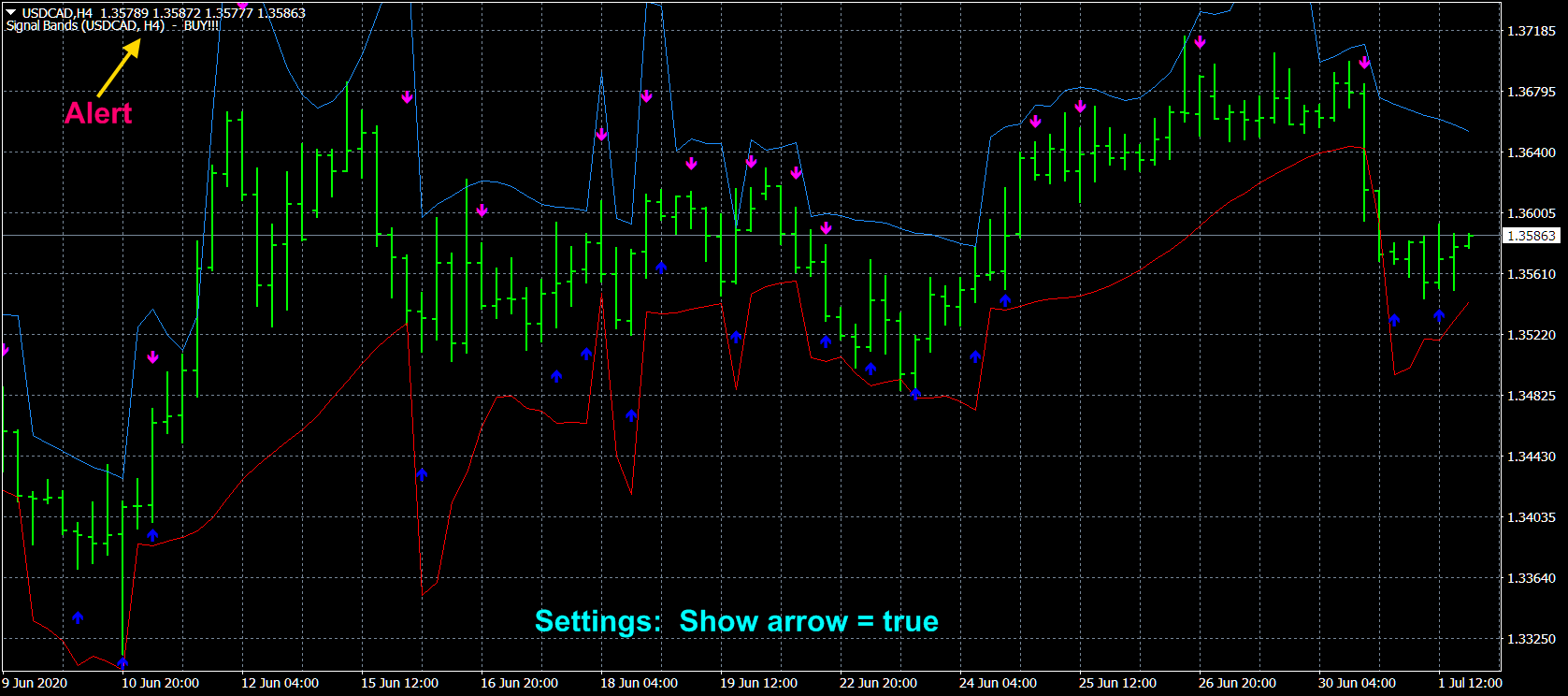
Signal Bands
https://www.mql5.com/en/accounting/buy/market/29171?period=0
Signal Bands is a sensitive and convenient indicator, which performs deep statistical processing of information. It allows to see on one chart (1) the price trend, (2) the clear price channel and (3) latent signs of trend change. The indicator can be used on charts of any periods, but it is especially useful for scalping due to its high sensitivity to the current market state.
The functions of the indicator:
First, the Signal Bands indicator draws channels into which all price fluctuations exactly fit, so with default parameters, the price will never exceed the limits of this channel (except for the occurrence of very high peaks of signal information).
Sharp movements on channel lines (sharp peaks) indicate a change in price direction. Signals provided by such sharp peaks are often leading, i.e. they occur about 1-2 bars before the beginning of price reversal. A sharp downward peak at the bottom line of the channel down is the criterion for the reversal of the price upwards. Conversely, the sharp upward peak of the upper channel line precedes the downward price reversal.
The signals of the Signal Bands indicator are algorithmically formed based on the analysis of the current density of the price probability, which is subject to a strong asymmetry before the very moment of price direction change due to short-term price surges (which might be aiming at hitting the StopLoss of most traders) in the direction opposite to its new movement.
The indicator readings are extremely simple and do not require special explanations. Blue arrows pointing up are a buy signal, red arrows pointing down are a sell signal.
The Signal Bandsindicator can be used both for trading according to scalper strategies, and when using long-term trading strategies. The indicator has all types of alerts. The indicator does not redraw.
Indicator Settings
Price type. Values: Close price, Open price (default), High price, Low price, Median price ((high + low)/2), Typical price ((high + low + close)/3), Weighted price ((high + low + 2*close)/4).
The averaging method. Values: Simple (default), Exponential, Smoothed, Linear weighted.
The averaging period - averaging period. Integer. Default is 20.
Channel width factor - channel width factor. The real number Default is 1.0.
The factor of sensibility . - Coefficient of sensitivity to price surges. The real number. Values from 2.0 to 6.0. Default is 4.0.
Show one branch? - Show one branch? Values: true - one branch, false - two branches.
Show arrow ? (only in the mode of one branch) - Show signals with arrows. Values: true (default), false.
Line & arrow thickness. Values: any positive integer (1 default).
The Signal method - Type of trading alert. Values: No (default), Send alert, Print (in expert), Comment (in chart), Sound + Print, Sound + Comment, Sound, Push + Comment, Push, Mail + Comment, Mail.
✔️The indicator has all types of alerts.
✔️The indicator does not redraw.
✔️The algorithms of this indicator are unique and developed by their author
https://www.mql5.com/en/accounting/buy/market/29171?period=0
https://www.mql5.com/en/accounting/buy/market/29171?period=0
Signal Bands is a sensitive and convenient indicator, which performs deep statistical processing of information. It allows to see on one chart (1) the price trend, (2) the clear price channel and (3) latent signs of trend change. The indicator can be used on charts of any periods, but it is especially useful for scalping due to its high sensitivity to the current market state.
The functions of the indicator:
First, the Signal Bands indicator draws channels into which all price fluctuations exactly fit, so with default parameters, the price will never exceed the limits of this channel (except for the occurrence of very high peaks of signal information).
Sharp movements on channel lines (sharp peaks) indicate a change in price direction. Signals provided by such sharp peaks are often leading, i.e. they occur about 1-2 bars before the beginning of price reversal. A sharp downward peak at the bottom line of the channel down is the criterion for the reversal of the price upwards. Conversely, the sharp upward peak of the upper channel line precedes the downward price reversal.
The signals of the Signal Bands indicator are algorithmically formed based on the analysis of the current density of the price probability, which is subject to a strong asymmetry before the very moment of price direction change due to short-term price surges (which might be aiming at hitting the StopLoss of most traders) in the direction opposite to its new movement.
The indicator readings are extremely simple and do not require special explanations. Blue arrows pointing up are a buy signal, red arrows pointing down are a sell signal.
The Signal Bandsindicator can be used both for trading according to scalper strategies, and when using long-term trading strategies. The indicator has all types of alerts. The indicator does not redraw.
Indicator Settings
Price type. Values: Close price, Open price (default), High price, Low price, Median price ((high + low)/2), Typical price ((high + low + close)/3), Weighted price ((high + low + 2*close)/4).
The averaging method. Values: Simple (default), Exponential, Smoothed, Linear weighted.
The averaging period - averaging period. Integer. Default is 20.
Channel width factor - channel width factor. The real number Default is 1.0.
The factor of sensibility . - Coefficient of sensitivity to price surges. The real number. Values from 2.0 to 6.0. Default is 4.0.
Show one branch? - Show one branch? Values: true - one branch, false - two branches.
Show arrow ? (only in the mode of one branch) - Show signals with arrows. Values: true (default), false.
Line & arrow thickness. Values: any positive integer (1 default).
The Signal method - Type of trading alert. Values: No (default), Send alert, Print (in expert), Comment (in chart), Sound + Print, Sound + Comment, Sound, Push + Comment, Push, Mail + Comment, Mail.
✔️The indicator has all types of alerts.
✔️The indicator does not redraw.
✔️The algorithms of this indicator are unique and developed by their author
https://www.mql5.com/en/accounting/buy/market/29171?period=0

Aleksey Ivanov
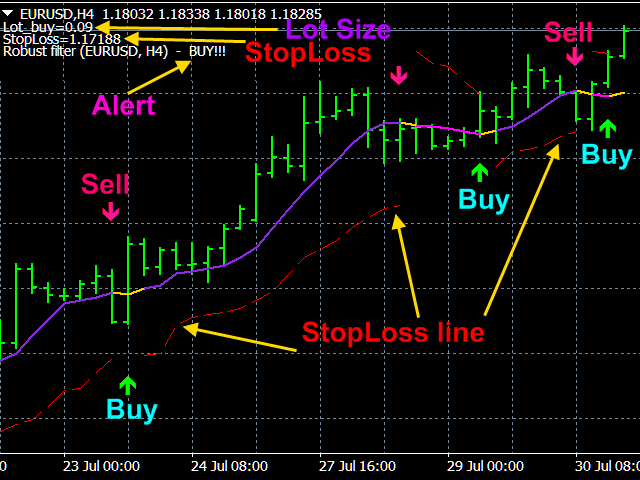
Robust filter https://www.mql5.com/en/accounting/buy/market/52668?period=0
The Robust filter indicator is based on the robust filtering algorithm developed by the author using the multi-period averaged moving median.
The indicator calculates and shows:
✔️1. The direction of the trend;
✔️2. Entry and exit points of positions;
✔️3. StopLoss lines calculated from current price probability distributions and selected probability of closing an order by StopLoss before the trend reversal;
✔️4. Lot sizes based on the accepted risk level, deposit size and StopLoss position.
============================================================
✔️The indicator has all kinds of alerts.
✔️The indicator does not redraw.
✔️The indicator can be used both for trading scalper strategies and for long-term trading strategies.
The Robust filter indicator is based on the robust filtering algorithm developed by the author using the multi-period averaged moving median.
The indicator calculates and shows:
✔️1. The direction of the trend;
✔️2. Entry and exit points of positions;
✔️3. StopLoss lines calculated from current price probability distributions and selected probability of closing an order by StopLoss before the trend reversal;
✔️4. Lot sizes based on the accepted risk level, deposit size and StopLoss position.
============================================================
✔️The indicator has all kinds of alerts.
✔️The indicator does not redraw.
✔️The indicator can be used both for trading scalper strategies and for long-term trading strategies.

Aleksey Ivanov
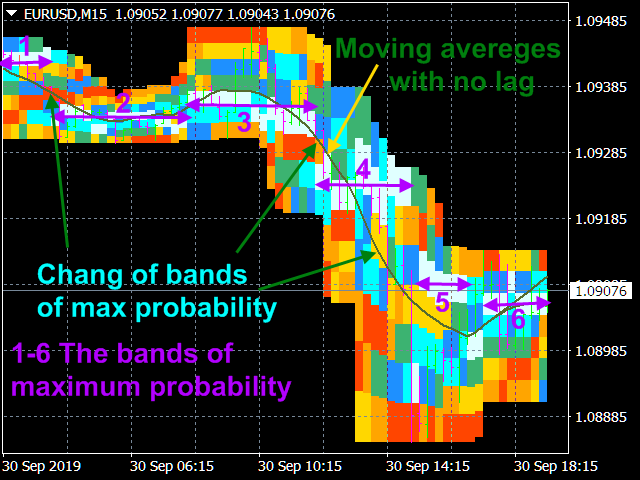
Probabilities distribution of price (PDP) https://www.mql5.com/en/accounting/buy/market/27070?period=0
Indicator is used for:
1. defining price probability distributions. This allows for a detailed representation of the channel and its borders and forecast the probability of a price appearing at each segment of its fluctuations;
2. defining the channel change moment.
✔️The algorithms of this indicator are unique and developed by their author
✔️ It has built-in management
Indicator is used for:
1. defining price probability distributions. This allows for a detailed representation of the channel and its borders and forecast the probability of a price appearing at each segment of its fluctuations;
2. defining the channel change moment.
✔️The algorithms of this indicator are unique and developed by their author
✔️ It has built-in management

Aleksey Ivanov
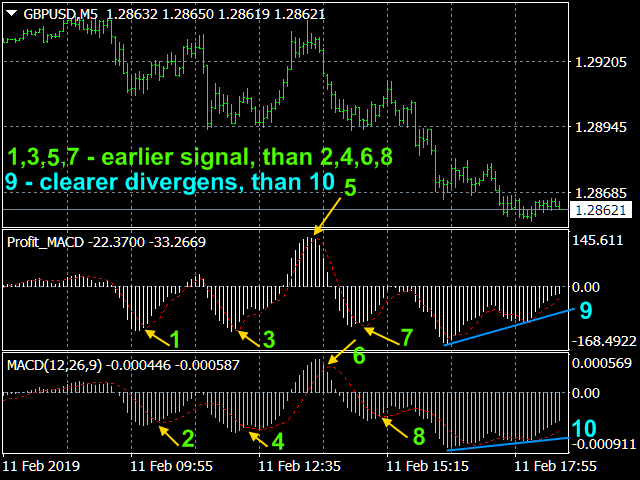
Prof MACD (MT5) https://www.mql5.com/en/accounting/buy/market/65276?period=0
✔️ One of my most profitable indicators with optimal filtering.
✔️The algorithms of this indicator are unique and developed by their author
✔️The indicator has all kinds of alerts.
✔️ The indicator does not redraw.
✔️ One of my most profitable indicators with optimal filtering.
✔️The algorithms of this indicator are unique and developed by their author
✔️The indicator has all kinds of alerts.
✔️ The indicator does not redraw.

: